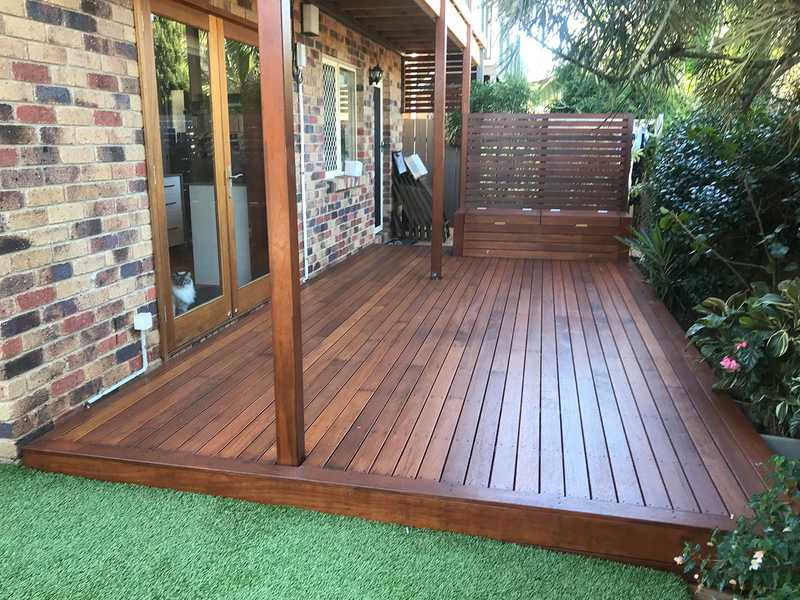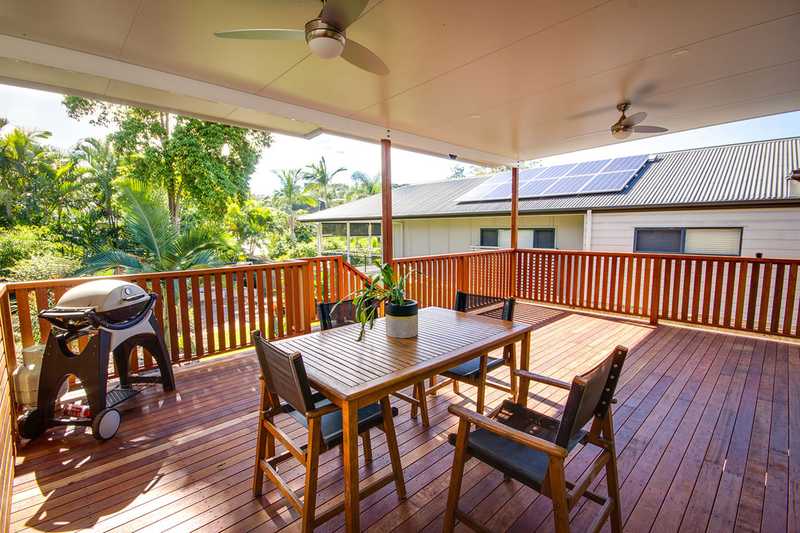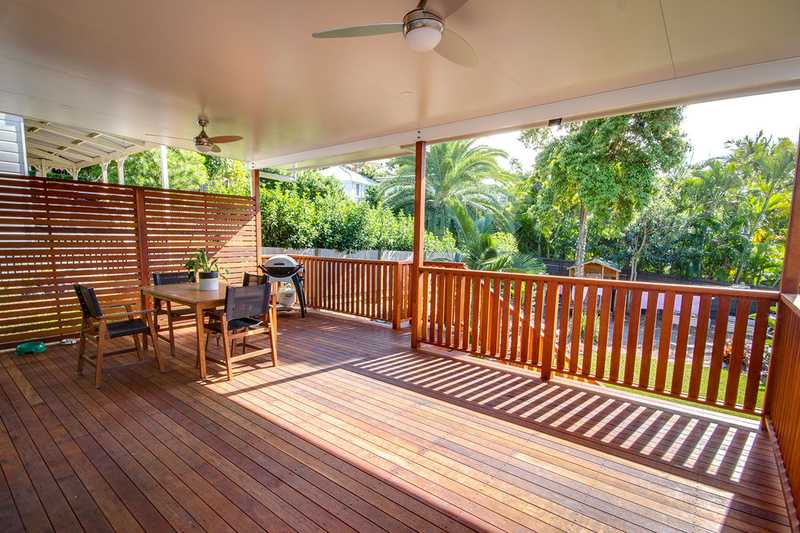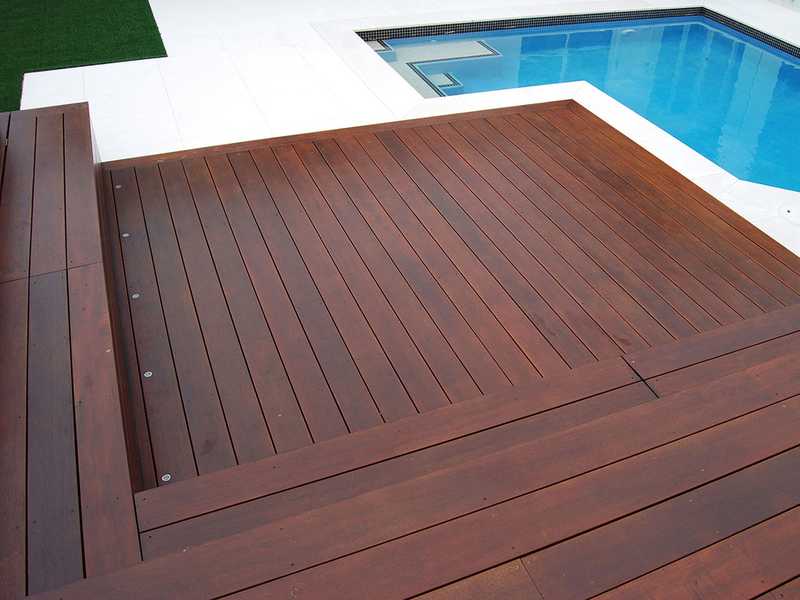Merbau hardwood timber continues to rise in popularity, especially for decking and pergola construction. It is a stylish timber, that is also durable, affordable and low maintenance.
In this blog we explain where merbau timber comes from, how to care for it, and discuss the pros and cons of this beautiful timber.

Merbau timber comes from the Kwila tree or Pacific Kwila tree. It thrives and is grown predominately in tropical regions. Each tree can grow to a height of 40 metres and the trunk can reach a diameter of 60cm.
The hardwood of the merbau tree is a rich, warm reddish/brown colour with the occasional fleck of gold/yellow. It has a natural colour variation which brings warmth and depth for any use of this beautiful timber.
Merbau timber has a high tannic acid content and is oily. This combination makes the timber extremely strong, sturdy, stable and resilient, and immune to decay, weathering, termites, mold and fire. It requires less maintenance than some other hardwoods.
The merbau wood is mainly used for decking, fencing, flooring, outdoor furniture, marine construction, music instruments and more.
Much of the Australian supply of merbau timber comes from North Queensland, SE Asia and South Pacific managed plantations. The Kwila tree species can be found in other tropical climates around the world -Indo Pacific islands (Fiji, Samoa, Papua New Guinea, Philippines, King Islands), and also India, Tanzania and Madagascar.


It is important to also look at the negatives when making a decision. Merbau timber does fall short in some areas.

During periods of rain or heavy dew merbau timber can bleed dark brown/red tannins, this is because it is rich in natural oils. Owners can let the merbau timber deck bleed naturally over time or speed the process by using a deck wash.
Regular oiling of the merbau deck is recommended (1-2 times a year). This will keep the timber in great condition and looking beautiful for many years to come while maintaining the rich, warm hues of the timber. The appearance of merbau improves with time.
DeKing Decks pride themselves on using only the highest quality materials which are guaranteed to withstand the Queensland climate. Merbau timber is a very popular choice in South East Queensland. It can tolerate the unrelenting summer heat and storms, everyday wear and tear and the constant pool splashes.
DeKing have in-house design specialists. Whether you want to design the ultimate entertainment area, or need a deck designed for a small backyard pool, the professional team at DeKing Decks will create a practical and stunning solution for you.
Have a look through the gallery of decks that we have previously built to get an idea of what we can offer. Contact us for more information.
**DeKing Decks service Brisbane, Redlands, Bayside, Logan, Ipswich, Moreton Bay, Gold Coast, and Sunshine Coast **
See our average cost to build a deck with or without a patio.
Or
Use our Decking Calculator, Patio Roofing Calculator or Deck and Patio Roofing Calculator to get a more accurate estimate.